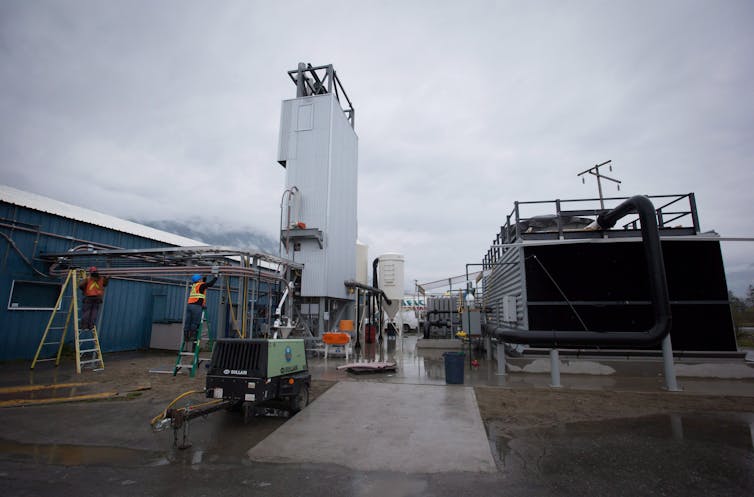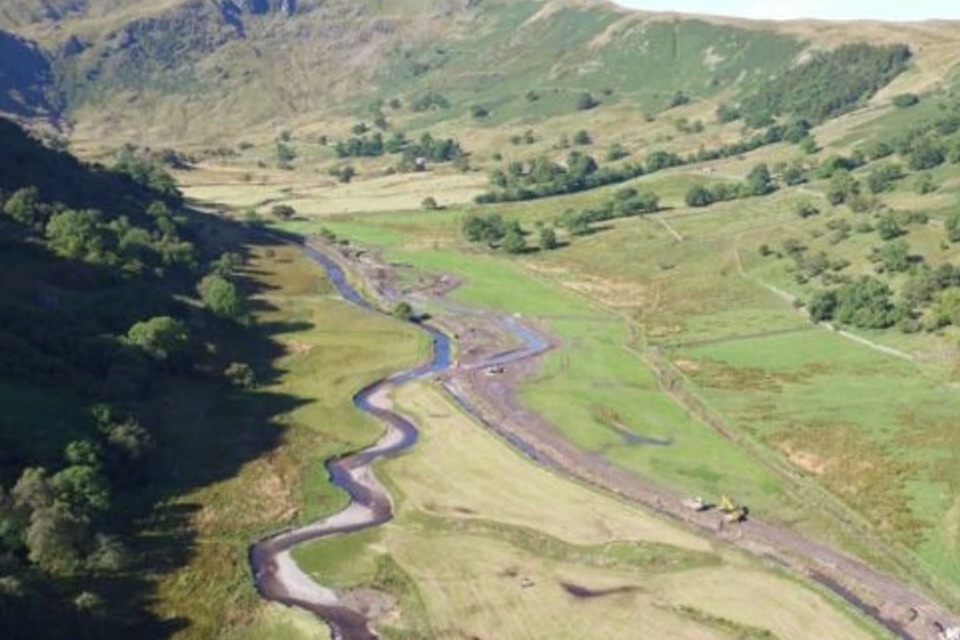This June was the warmest one ever recorded and unprecedented summer heat waves are now gripping southern Europe, China, the Middle East and the southern United States.
In the face of such unprecedented heat, one would think that the world would wake up to the urgent need to rapidly decarbonize energy systems, transition to a low carbon economy and increase investment in negative emission technologies.
National Oceanic and Atmospheric Association
California’s Death Valley recorded 56.6 C temperatures, and rather than reflecting on the obvious effects of global warming, tourists flocked to the area. Similarly, thrill-seeking visitors rushed to Xinjiang, China, to experience 80 C surface temperatures and more than 50 C air temperatures.
Tourists also headed in droves to the beaches and historical sites of Italy, Spain and Greece, where governments were warning them to stay indoors to avoid the potentially life-threatening heat.

(AP Photo/Thanassis Stavrakis)
In Canada, we have already experienced our worst recorded forest fire season. And in British Columbia, where I live, we have already broken the previous 2018 record with more than 13,900 square kilometres burnt. And this is just the beginning of the 2023 fire season.
Remarkable cognitive dissonance
I doubt those jetting off to visit the heat-ravaged regions of the world are aware that Antarctica has already shattered previous sea ice melt records, with potentially dire consequences for glacial outflow and future sea level rise.
Are tourists aware that coral reefs worldwide are in the process of dying off on an unprecedented scale?
Perhaps they might want to reflect on the fact that Earth has already warmed by around 1.1 to 1.2 C since pre-industrial times.
Many may not realize that even if worldwide fossil fuel combustion was immediately eliminated, the roughly 0.5 C cooling contribution of atmospheric aerosols — also the result of existing fossil fuel combustion — would rapidly dissipate through gravitational settling and precipitation scavenging of these aerosols. This would cause the Earth to warm rapidly to around 1.6 to 1.7 C above pre-industrial levels.
The warming does not end there, as the planet is on course to go well above 2 C in the decades ahead once reduced aerosol cooling, permafrost melt and other greenhouse gases are taken into account.
I suspect that these travellers are unaware that when these other pesky greenhouse gases are included, the net radiative effect is equivalent to 523 ppm CO2e, of which only 417 ppm is from CO2 alone.
The Paris Agreement
Governments worldwide have signed on to the 2015 Paris Agreement committing nations to collectively limit global warming to well below 2 C above pre-industrial levels while pursuing efforts to limit the temperature increase to 1.5 C.
The Paris Agreement might appear promising. But the reality is that the 1.5 C guardrail cannot be met, and that socioeconomic inertia prevents us from even staying below the 2 C threshold. Even if every country met its promised emissions reductions, global mean temperatures would still soar past 2 C.
The Paris Agreement is working as intended, but we’ve still got a long way to go
We have known for more than 15 years that “if a 2.0 C warming is to be avoided, direct CO2 capture from the air, together with subsequent sequestration, would eventually have to be introduced in addition to sustained 90 per cent global carbon emissions reductions by 2050.”
So, while governments, industry and public sector institutions worldwide are announcing their intention to reach net-zero emissions by 2050, the reality is these are nothing more than aspirational goals made by decision-makers who will not be around to be held accountable for the decisions they made.
Reaching net-zero
To meet the target of these net-zero claims, most will rely on so-called nature-based solutions such as planting trees, using biochar in soils to enhance soil carbon uptake and restoring mangroves, salt marshes and seagrass meadows.
To be clear, nature-based climate solutions have an important role to play.
Human disruption of natural ecosystems has accounted for about 30 per cent of historical greenhouse gas emissions, so it is reasonable to expect nature-based climate solutions to have a key role to play moving forward.
But there are limits, not the least of which is that global warming will continue to cause increased wildfires in the years ahead. And these wildfires release the carbon stored in the vegetation back to the atmosphere.
While nature-based solutions can help in climate change adaptation and the preservation of biodiversity, there is a growing danger that governments, industry and the public will come to rely on them to maintain the status quo, thereby delaying what is actually needed.

THE CANADIAN PRESS/Darryl Dyck
We now need an immediate transition towards the decarbonization of global energy systems and the widespread introduction of negative emission technology, such as direct air carbon capture and deep underground carbon sequestration.
This is the only hope humanity has for a long-term solution to global warming.
We can take comfort in the very real successes of nature-based solutions and their many benefits. But we cannot take our eyes off the scale of the challenge before us. While all the solutions are known, achieving the goals of net zero emissions in the future is a matter of individual, institutional, corporate and political will.
Rather than jetting off around the world to feel the heat, perhaps it’s time for everyone to take a good hard look at their individual contribution to global warming.
Each of us is part of the problem, meaning that each of us can also be part of the solution. And this notion can create an environment ripe for innovation and creativity — the foundational requirements of any prosperous and vibrant future.




